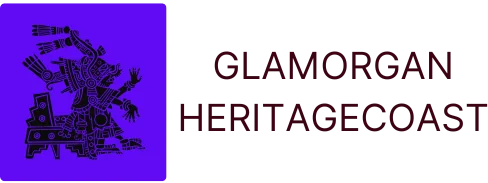In today’s fast-paced world, moving trends are evolving faster than ever. Gone are the days of packing up everything and hoping for the best. Now, people are embracing innovative solutions that make relocating feel less like a chore and more like an adventure. Whether it’s eco-friendly packing materials or high-tech moving apps, today’s movers are equipped with tools that would make even a seasoned Tetris player proud.
But let’s be real—moving can still be a comedy of errors. From that one couch that refuses to fit through the door to the inevitable “Where did I put my keys?” panic, it’s a wild ride. So buckle up as we explore the latest trends that are transforming the moving experience, making it smoother, greener, and maybe even a bit more enjoyable. After all, who says moving has to be a pain in the neck?
Table of Contents
ToggleOverview of Moving Trends
Modern moving trends emphasize convenience and sustainability, transforming relocation into a more efficient experience. Technologies, such as virtual consultations and online inventory management systems, streamline planning and execution. An increasing number of individuals opt for eco-friendly packing materials, reducing environmental impact while moving.
Mobile apps facilitate coordination, allowing users to track shipments in real-time. GPS tracking has become standard, enabling more accurate arrival estimates and increasing transparency. Data shows that 47% of movers now utilize moving apps for better organization, reflecting their growing importance in the industry.
Personalized services also gain popularity, catering to unique needs. Many moving companies offer customized packages, which include packing, storage, and even unpacking services. This shift enables movers to tailor their experiences, focusing on what matters most to them.
While do-it-yourself moves remain common, there’s an evident rise in consumers choosing professional services. Nearly 60% of people seek help from movers to alleviate stress and manage logistics effectively.
Maintaining a focus on flexibility, some companies offer short-term rentals for moving supplies. Customers appreciate the convenience of picking up and returning items at their discretion. Hybrid models combining self-service and full-service options continue to attract attention, appealing to various budgets and preferences.
Sustainability trends are significant, with many companies adopting eco-friendly practices. This includes using electric vehicles and minimizing waste during packing processes. As consumer awareness around environmental issues increases, the demand for such initiatives is likely to grow.
Moving trends continue to shape the way individuals approach relocation, reflecting advancements in technology and changes in consumer behavior.
Factors Influencing Moving Trends

Numerous factors impact moving trends today, shaping how individuals approach relocation. Economic and social elements play crucial roles in determining these patterns.
Economic Considerations
Economic conditions significantly influence moving decisions. As property values fluctuate, many people consider relocating to areas with more affordability. Current data shows that 60% of movers seek professional help due to financial constraints and the desire for efficient logistics. Employment opportunities also motivate relocations, with individuals moving towards job-rich regions. Furthermore, rising costs of living push families to downsize or explore less expensive neighborhoods. Interest rates and housing market stability can impact the ease of buying or selling homes, making financial factors instrumental in the moving process.
Social Changes
Social dynamics drive moving trends as well. Population shifts towards urban centers reflect changing lifestyle preferences. Millennials, in particular, often prioritize access to amenities like entertainment, dining, and public transportation. Data suggests that 47% of movers utilize modern apps that enhance coordination and community connections. Families are relocating to suburban areas for better schools and safer environments. Additionally, the increasing acceptance of remote work permits individuals to live farther from their jobs, encouraging new residential patterns. Social engagement and proximity to friends and family can determine relocation choices, shaping community development and growth.
Popular Destinations for Relocation
Shifts in relocation patterns reveal significant preferences among movers. Understanding these trends helps identify popular destinations.
Urban vs. Suburban Shifts
Movers increasingly prefer suburban areas for their balance of space, affordability, and quality of life. The appeal of urban centers remains strong due to job opportunities and vibrant lifestyles. A trend shows that nearly 60% of families favor suburban living to access better schools and community resources. Millennials often seek urban environments for their cultural amenities, yet many are now reconsidering suburban options in light of remote work possibilities. Individuals transitioning from urban centers may prioritize homes with larger outdoor spaces, reflecting a shift in lifestyle preferences toward comfort.
Emerging Hotspots
Emerging hotspots are reshaping popular relocation destinations. Cities like Austin, TX, and Raleigh, NC, attract many movers due to their job markets and quality of life. Data reveals a growing interest in locations that offer both employment opportunities and lower living costs. Additionally, areas in the Mountain West, such as Bozeman, MT, are experiencing rapid growth as more people look for outdoor activities combined with a slower pace of life. These destinations combine affordability, amenities, and community engagement, making them attractive choices for relocating individuals and families.
Moving Trends Post-Pandemic
The pandemic greatly influenced moving trends, reshaping how people relocate and where they choose to live.
Remote Work Impact
Remote work transformed relocation dynamics. Many employees now have flexibility in their job locations. As a result, regions with lower living costs became attractive. Individuals prioritize affordability and space over proximity to workplaces. Data shows that nearly 60% of workers express interest in moving due to remote work opportunities. Move to suburban or rural areas is frequent, where larger homes and greener spaces are available. Remote work encourages adaptability, allowing families to explore new destinations previously deemed impractical.
Changes in Housing Preferences
Housing preferences shifted considerably during the pandemic. A significant number of families now seek homes with dedicated office spaces. Buyers prioritize outdoor areas and amenities, reflecting a desire for a balanced lifestyle. Nearly 60% of families prefer suburban living because of better schools and larger properties. Urban centers still attract some for vibrant lifestyles and job prospects. However, many are drawn to smaller cities like Austin, TX, and Raleigh, NC, for affordability and growing job markets. Such trends denote a clear evolution in buyer sentiment regarding space, community, and lifestyle.
The landscape of moving continues to shift as technology and consumer preferences evolve. With a focus on convenience and sustainability movers are embracing innovative solutions that transform the relocation experience. Personalized services and eco-friendly practices are becoming the norm as individuals seek to tailor their moves while reducing their environmental footprint.
The impact of economic and social factors is evident as more people prioritize affordability and quality of life in their relocation decisions. As remote work becomes more common the appeal of suburban and rural areas grows. This ongoing evolution in moving trends not only enhances the process but also reflects broader societal shifts toward flexibility and sustainability.










